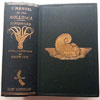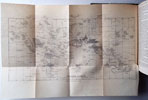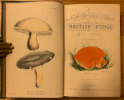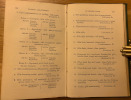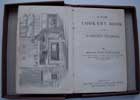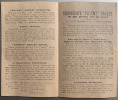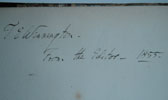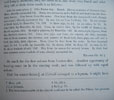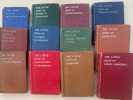Dodoens.
Rembert
- The rare first ed. of 1578 with Thos. Campion's signature.
A Nievve Herball,
Or, HISTORIE OF PLANTES: wherein is contayned the vvhole discourse and per-fect description of all sortes of Herbes and Plantes: their diuers & sundry kindes: their straunge Figures, Fashions, and Shapes: their Names / Natures / Operations / and Ver-tues: and that not onely of those whiche are here growyng in this our Countrie of Englande / but of all others also of forrayne Realmes / commonly used in physicke. First set forth in the Doutche or Almaigne tongue, by that learned D. Rembert Do-doens, Physition to the Emperour: And nowe first translated out of French into English, by Hen-ry Lyte Esquyer. AT LONDON by m Gerard Dewes, dwelling in Pawles Churchyarde at the signe of the Swanne. 1578. Title within woodcut historiated border, with woodcut arms of the translator on verso.
FIRST ENGLISH EDITION. 1578. Large thick 4to. 295x202mm. 1fep. Engraved Title strengthened and reinforced at the edges with no loss. On the verso - Henry Lyte's coat of Arms and a crest "a swan volant silver upon a trumpet gold," (which was not actually granted him by Clarenceux King of Arms uпtil the following year). 2p, Dedication to Queen Elizabeth. 1p, Dedication to the friendly and indifferent Reader. 3p, Latin text headed W.B. and Thomas Newton. 1p, A commendation to Henry Lyte. 2p, To the Reader, in commendation of this worke. Verso - woodcut portrait of Dodoens. 4p, Medical credentials of Rembert Dodoens. 2p, Epistola ad Lectorem of Rembert Dodoens. 6p, Appendix. 1-779. 24p Index in Latin. (one page with srengtheened edge). On verso, Antwerp printers allegorical woodcut colophon. 2 feps, first blank with neat manuscript writing and on the last blank; Thomas Campion's signature. The first six pages and the engraved title page slightly dusty. With 870 woodcuts of plants. A full dark brown calf binding with blind tooled lines and device on the boards. The spine with raised bands, blind tooled lines and a red morocco label with gilt lettering. A nice copy of the very rare first with the wonderful woodcuts. (It was even described as very rare in the 17th century). Bookplate on front paste-down of Henry W. Poor.
-
Rembert Dodoens, born Mechelen, Belgium on June 29, 1517, died in Leyden, Netherlands on March 10, 1585. He was a Flemish physician and botanist, also known under his Latinised name Rembertus Dodonaeus.
In 1530 he started his studies of medicine, cosmography and geography at the University of Leuven, where he graduated in 1535, then establishing himself as a physician in Mechelen in 1538. He married Kathelijne De Bruyn(e) in 1539. From 1542-1546 he stayed in Basel. He turned down a chair at the University of Leuven in 1557, also turning down an offer to become court physician of emperor Philip II of Spain, instead choosing to became the court physician of the Austrian emperor Rudolph II in Vienna (1575-1578). He then became professor of medicine at the University of Leiden in 1582.
Dodoens' great herbal ‘Cruydeboeck’, 1554, was influenced by the herbal of Leonhart Fuchs. He divided the plant kingdom in six groups. It treated in detail especially the medicinal herbs, which made this work, in the eyes of many, a pharmacopoeia.
It was translated first into French in 1557 by Charles de L'Ecluse and called a ‘Histoire des Plantes’, and then into English (via L'Ecluse) in 1578 by Henry Lyte, and titled ‘A Neiwe Herbal, or Historie of Plants’. This first edition of the English translation was printed in folio at Antwerp, in order to secure the woodcuts of the original; the blocks being too heavy and valuable to transport. It has 779 pages mostly in black-letter and 870 woodcuts, about thirty of which are original. Lyte added very little original matter to the text. A second edition in square octavo and without any woodcuts, was printed in 1586 in London by Ninian Newton, and a third in 1595 by Edmund Bollifant in the same size. A folio edition also without woodcuts was published by Edward Griffin in 1619. In its time, it was the most translated book after the Bible. It became a work of worldwide renown, used as a reference book for two centuries.
Dodoens's last book, ‘Stirpium Historiae Pemptades Sex sive Libri XXX’, 1583, was the Latin translation of his ‘Cruydeboeck’. It was used as a source by John Gerard for his Herball. The BL holds four copies; This first of 1578, other editions of 1586, 1595 and 1619.
THOMAS CAMPION was born in London on February 12, 1567. He was a law student, a physician, a composer, a writer of masques and a poet. He went to Peterhouse College - Cambridge in 1581. In 1586 was admitted to Gray's Inn in London to study law. He participated in the Gray's Inn revels of 1588 and contributed songs to the Gesta Grayorum revels of 1594, but seems never to have been called to the bar.
Campion's first poetic attempts were in Latin. His love of quantitative versification in classical Latin poems carried over into his English poems and songs. Campion was first published in 1591, when five of his songs appeared in Newman's unauthorized edition of Sidney's Astrophel and Stella. Four years later he published his own book, a collection of Latin epigrams, called Poemata (1595). Campion's reputation rests chiefly on his lyric poems, which are distinguished by their musical quality and charm. They were published 1601-1617 in four books of airs, beginning with A Booke of Ayres to be Sung to the Lute, Orpherian and Bass Viol (1601).
Campion spent three years (1602-1605) on the Continent, and received the M.D. degree from the University of Caen in 1605. After returning to England, he practised as a doctor in London from 1606. During that time, he wrote several masques which were performed at the court of James I. Perhaps the best of them was the Lords' Masque (1613). In 1613 he also published A New Way of Making Fowre Parts in Counterpoint, a book on music theory. Campion died in London, probably of the plague, on March 1, 1620, and was buried at St. Dunstan's-in-the-West. Henry W. Poor whose bookplate is tipped into this book, was born in 1844, and was an American banker and publisher of 'Poors' Railway Manual'. He was also a famous wall street dealer, active in leather and ice securities garnering a fortune in excess of $5,000,000. He was a collector of fine art and had a library that was without equal anywhere in the country. He died in 1915.





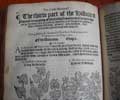
|
|

Antiquarian category
ref number:
11078
|
